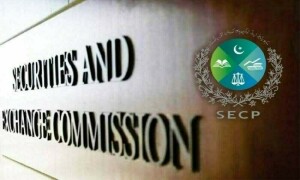Tri-Pack Films Limited (PSX: TRIPF) was established in 1993 as a public limited company as a result of a joint venture between Mitsubishi Corporation of Japan and Packages Limited of Pakistan to produce Biaxially Oriented Polypropylene (BOPP) Films.
The company provides packaging solutions for both, the food industry as well as other entities such as lamination, overwrapping, bag making, etc. They are present in both, the domestic market as well as the international market, although local sales make a large part of their revenue. Some of the export destinations are Bangladesh, Middle East, Kenya, South Africa, etc.
Shareholding pattern
As of December 31, 2019, a large part of the shares, nearly 63 percent, is held by the associated companies, undertakings, and related parties. Within this category, Packages Limited is a major shareholder. Some 19 percent shares are with the local general public, while the directors, CEO, their spouses and minor children own a little over 2 percent shares in the company, of which Mr. Syed Babar Ali, the chairman of the company, holds majority of the shares.

Historical operational performance
Tri-Pack Films has mostly seen positive topline growth with the exception of CY15 and CY16, while profit margins bottomed out once in CY14, peaked in CY16 and since then have been on a steady decline.

In CY16, the company saw its topline contracting marginally by 1.5 percent. This was due to a decline in raw material prices that brought the selling prices also down. Lower raw material prices also had an effect on cost of production as it reduced to 83 percent, from previous year’s 84.5 percent; at 83 percent, the company saw one of the lowest costs of production. This resulted in a similar positive change in gross margins, that was recorded at its highest of almost 17 percent; finance cost, that nearly halved year on year as a percentage of revenue, allowed net margin to peak at 6.4 percent for the year.

After witnessing contraction in topline for two consecutive years, Tri-Pack Films saw its sales revenue rising by 4 percent in CY17. A positive business environment, better security situation and growth in the retail sector steered demand in the economy that encouraged investments. Despite higher revenue, gross margin declined to 14.4 percent due to increase in raw material prices while selling price remained more or less stable. The 11 percent rise in raw material prices led to cost of production consuming 85.6 percent of the revenue. While finance expense continued to slide, it did not do much for profitability as net margin reduced to 4.7 percent.

In CY18, the country had the general elections that brought a lot of uncertainty for businesses in terms of significant currency depreciation, increase in gas prices and policy rates. Although supply of raw materials was stable during the year, the prices increased that caused cost of production to rise to more than 89 percent of revenue. Therefore, gross margin was recorded at 10.4 percent. The increase in policy rates was reflected in the finance expense that rose as a percentage of revenue thus net margin further reduced to 1 percent.

Topline in CY19 rose by 11 percent. However, this was due to the inflationary impact as the company saw lower production volumes. Cost of production rose marginally to nearly 90 percent of revenue thus gross margin also saw changes to similar effect. Finance cost, at Rs 820 million rose significantly as a percentage of revenue not only due to higher policy rates but also notable exchange loss. thus, profit before tax stood at negative that was further worsened by a high tax expense bringing net margin to its lowest at a negative 2 percent.
Recent results and future outlook
With the event of rising interest rates, the company had shifted its focus to better working capital management to improve cash flows. Thus, most of the finance expense during the first quarter of CY20 was associated with an exchange loss whereas interest cost was actually lower by 11 percent. Given the exchange rate fluctuation, cost of production was the highest thus far, in 1QCY20, among the three quarters of CY20, therefore the company was not off to a positive start in CY20 with a net loss of Rs 189 million.
In 2QCY20, although topline was lower on a quarter on quarter basis, due to a lower cost of production at 83 percent, profitability was relatively better compared to the first quarter. This was due to timely increase in selling price in response to recover the increase in raw material. A significant improvement in finance expense also contributed majorly to the bottomline for the quarter that ended with a net profit of Rs 256 million. The fall in finance expense was as a result of the government’s move to lower interest rates to sustain the economy during Covid-19 times.

Topline increased incredibly both on a year on year basis as well as quarter on quarter during 3QCY20. This was due to increase in demand after the lockdown as the economy returned to normalcy to a certain extent. Cost of production also rose along with the topline therefore gross margin reduced to 15 percent, from previous quarter’s 17 percent. Finance cost rose slightly quarter on quarter due to exchange loss while interest cost was lower by 23 percent. Thus, the period ended with a net profit of Rs 189 million.
The company expects seasonal slowdown in the last quarter while the rising number of cases could possibly dampen the demand further. Regardless, the company is targeting better working capital management in order to reduce finance expense and hopes to end the year with decent performance as the 9MCY20 shows a net profit of Rs 254 million.

























Comments
Comments are closed.